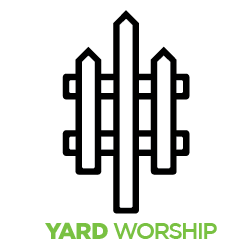Home Curb Appeal
Lawn Alternatives
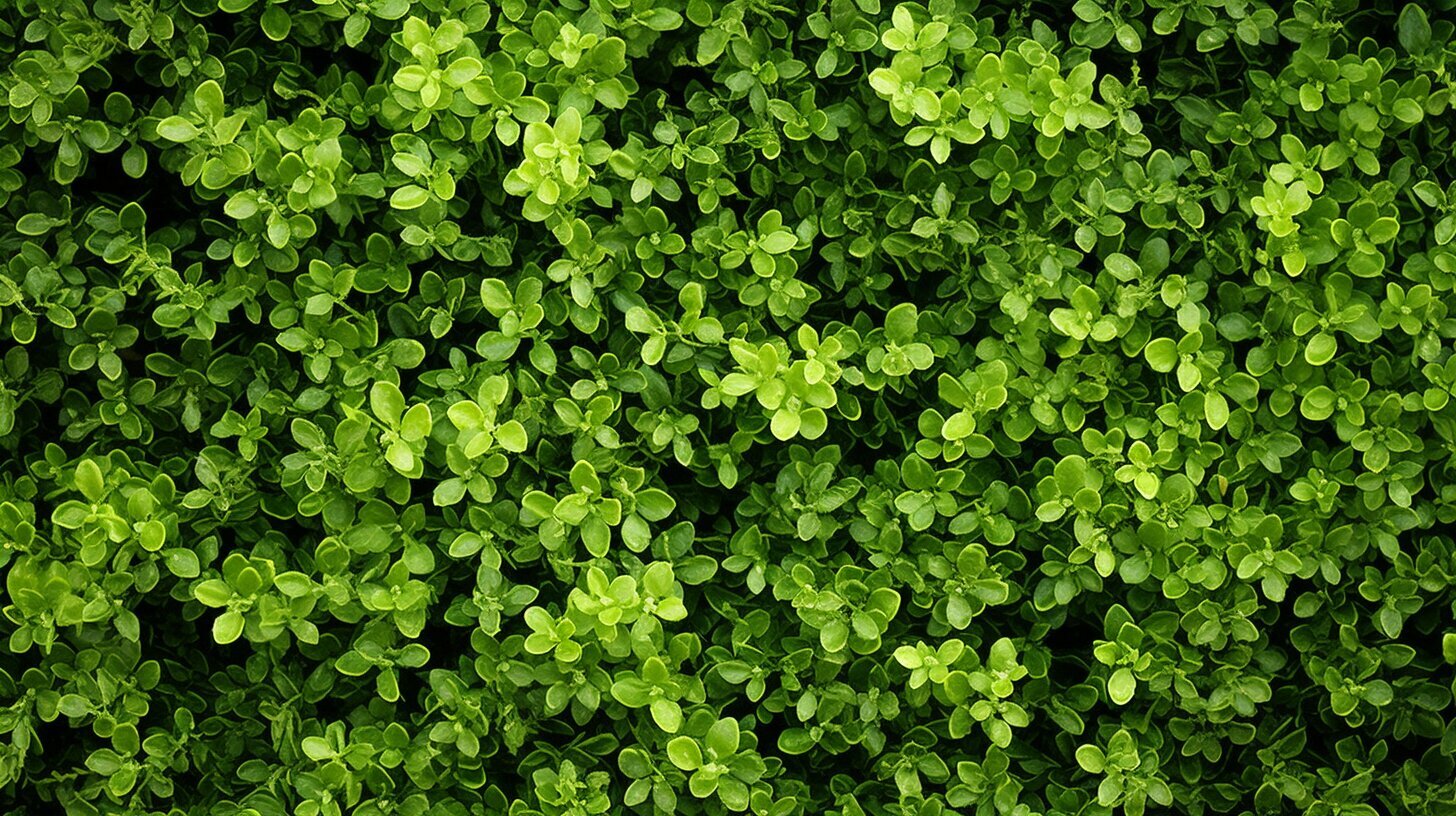
Are you tired of spending countless hours mowing, watering, and maintaining your lawn? Or perhaps you’re looking for ways to enhance your home’s curb appeal without the hassle of traditional grass? Lawn alternatives may be the solution you’ve been searching for.
Ground covers can offer a low-maintenance yet vibrant alternative to traditional lawns. They require less water, fertilizer, and pesticides, which can improve the environment and save you money in the long run. Plus, with a variety of options available, you can customize your yard to fit your personal style and climate.
Key Takeaways:
- Lawn alternatives can save you time and money while enhancing your home’s curb appeal.
- Ground covers offer a low-maintenance and environmentally-friendly alternative to traditional lawns.
- You can customize your yard with a variety of ground cover options to suit your style and climate.
Exploring Ground Covers
If you’re tired of the constant upkeep of a traditional lawn, ground covers can provide an attractive and low-maintenance alternative. By incorporating a variety of ground covers into your landscape, you can create a vibrant and dynamic yard while reducing the time and cost of maintenance.
Ground covers are plants that grow close to the ground and form a dense mat, making them ideal for use in place of grass. They come in a wide range of shapes, sizes, and colors, offering endless possibilities for adding interest to your landscape.
Types of Ground Covers
There are many types of ground covers to choose from, including natural options like clover, moss, and creeping thyme, as well as artificial turf for a maintenance-free option. Clover is a particularly versatile option, as it is drought-resistant and can grow in a variety of soil types and lighting conditions. Moss is another great option for shaded areas, as it requires little to no maintenance and provides a lush, vibrant look.
If you’re looking for a maintenance-free option, artificial turf may be the way to go. It requires no watering or mowing and can provide a green, lush look year-round. Plus, it’s perfect for high-traffic areas or locations where natural grass may struggle to grow.
Benefits of Ground Covers
Aside from their low-maintenance nature, ground covers also offer a range of benefits for your yard and the environment. They can help reduce erosion, improve soil health, and increase water retention. In addition, many ground covers are drought-resistant, making them an ideal choice for areas with limited rainfall or water restrictions.
By incorporating ground covers into your landscape, you can create a beautiful and sustainable yard that requires less time and resources to maintain. Plus, their wide range of colors and textures can add depth and interest to your outdoor space, enhancing your overall curb appeal.
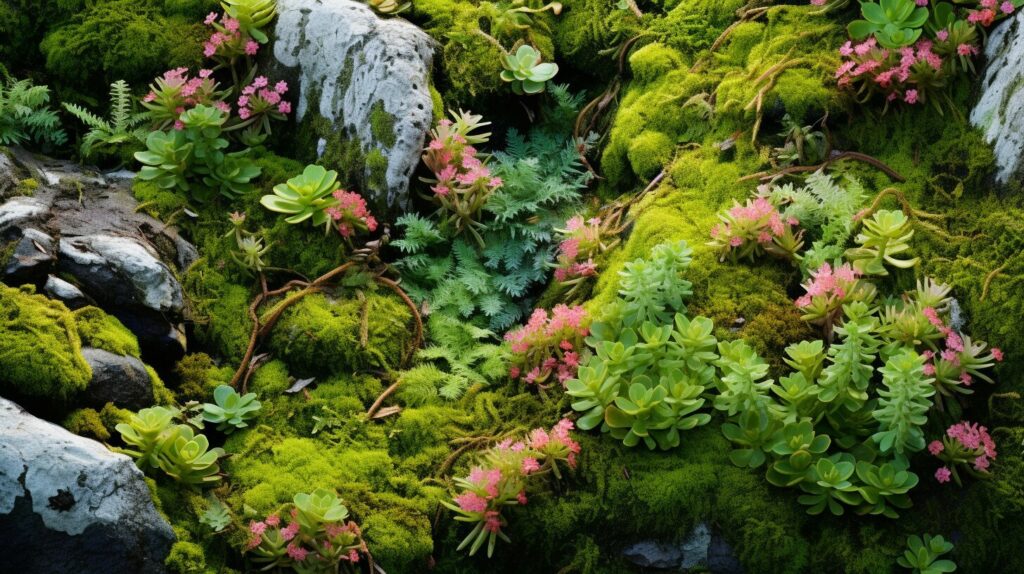
Image source: seowriting.ai
Benefits of Lawn Alternatives
Switching to lawn alternatives has numerous benefits that can make your yard more enjoyable and eco-friendly. Here are some advantages:
| Reduced maintenance: | Ground covers, unlike traditional lawns, require less maintenance. They do not need to be watered or mowed as frequently, which will save you time and money. |
|---|---|
| Improved environmental impact: | Ground covers require fewer chemicals and water than traditional lawns. In addition, they can help prevent soil erosion and provide natural habitats for pollinators. |
| Water conservation: | Many lawn alternatives, such as clover and creeping thyme, are drought-tolerant and require less water, which will save you money while also helping conserve this precious resource. |
By choosing lawn alternatives, you’re doing your part in creating a more sustainable environment. Plus, you’ll have more time to enjoy your yard and less time maintaining it.
Image source: 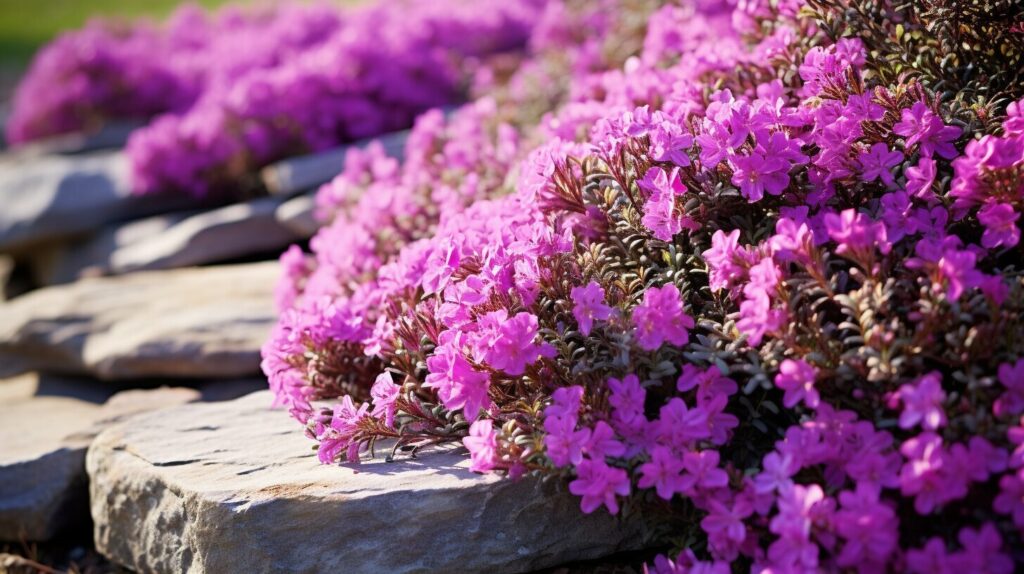
Types of Ground Covers
When it comes to selecting a ground cover to replace your lawn, there are many options to choose from. Some popular choices include natural ground covers like clover, moss, and creeping thyme, while others prefer the convenience of artificial turf for a maintenance-free solution.
Clover: Clover is a popular natural ground cover that requires little maintenance. It is a fast-growing plant that can add nitrogen to the soil, making it a great choice for nutrient-poor areas. Plus, clover can withstand drought conditions and is resistant to pests and diseases.
Moss: Moss is a natural ground cover that thrives in shady areas with moist soil. It adds a lush, green texture to your yard and can grow in a variety of soil conditions. Plus, moss requires no mowing or fertilization.
Creeping Thyme: Creeping thyme is a low-growing, drought-resistant plant that produces small pink or purple flowers. It can thrive in full sun to partial shade and is often used as a fragrant ground cover in walkways and borders.
Artificial Turf: For a maintenance-free option, many homeowners choose artificial turf. It looks and feels like real grass but requires no watering, mowing, or fertilizing. Plus, it is durable and can withstand heavy foot traffic.
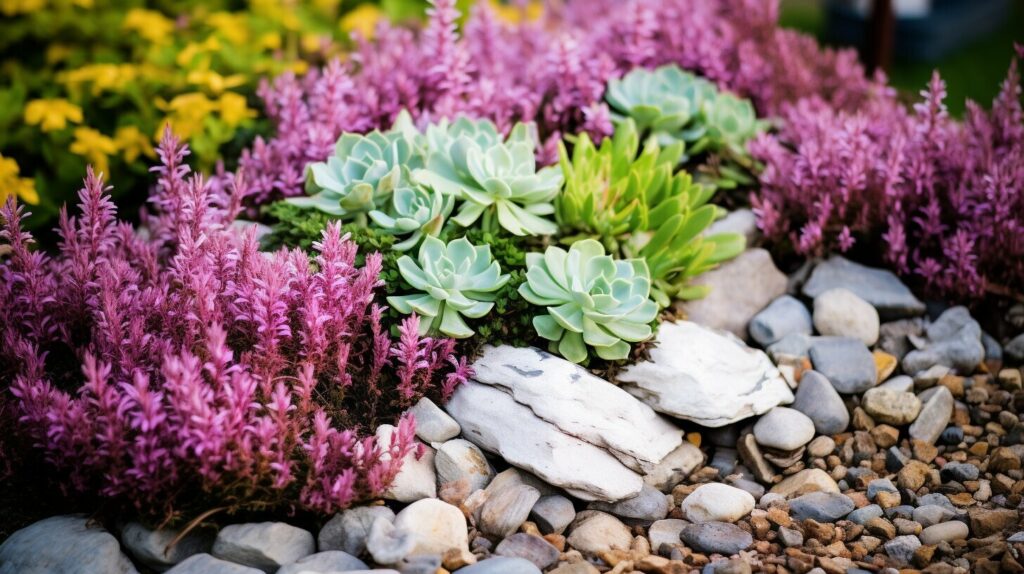
When selecting a ground cover, it’s important to consider the conditions of your yard, such as soil type, sunlight exposure, and foot traffic. Consult with a professional landscaper for expert advice on choosing the right ground cover for your specific needs.
Choosing the Right Ground Cover for Your Yard
When it comes to selecting the right ground cover for your yard, it’s important to consider several factors. Here are some tips to help you make an informed decision:
- Sunlight exposure: Some ground covers, like sedum and thyme, do well in full sun, while others, like ferns and moss, prefer shade.
- Soil type: Different ground covers thrive in different soil types. For example, clover and yarrow do well in well-drained soil, while manzanita and ceanothus prefer acidic soil.
- Foot traffic: If your yard receives frequent foot traffic, consider ground covers that can handle the wear and tear, such as creeping thyme or creeping phlox.
Keep in mind that some ground covers are invasive and can quickly take over your yard if not maintained properly. Be sure to research the specific ground cover you’re interested in before making a final decision.

Researching Ground Cover Options
Once you’ve considered the conditions of your yard, start researching the ground cover options that are suitable for your specific needs. Some popular ground covers include:
| Ground Cover Type | Description |
|---|---|
| Clover | Low-growing and nitrogen-fixing, clover requires little watering and can thrive in various soil types. It also attracts pollinators and is a popular choice for eco-friendly and sustainable landscaping. |
| Artificial Turf | A low-maintenance alternative to traditional grass lawns, artificial turf offers year-round greenery that requires no watering or mowing. It’s a great option for those who want a pristine lawn without the upkeep. |
| Moss | A shade-loving ground cover that adds a lush, forest-like feel to your yard. It requires moist soil and can absorb pollutants from the air, making it a beneficial addition to any yard. |
| Thyme | A fragrant and low-growing herb that thrives in full sun, thyme is a popular option for rock gardens and pathways. It requires well-drained soil and can handle occasional foot traffic. |
By researching the various types of ground covers available, you can find the perfect fit for your yard and create a low-maintenance, vibrant landscape that enhances your home’s curb appeal.
Installing Ground Covers
Now that you’ve decided on the ground covers that will work best for your yard, it’s time to get them installed. But before you begin, make sure you have all the necessary tools and materials. These may include a shovel, rake, soil amendments, and of course, your chosen ground covers.
The first step is to prepare the soil. Remove any existing grass, weeds, or debris from the area where you’ll be laying the ground cover. If necessary, add soil amendments to improve drainage or adjust the pH level. Then, rake the soil to create a smooth surface.
Next, lay out your ground cover according to the manufacturer’s instructions. Some types of ground covers, like creeping thyme, can be planted as plugs or seeds. Others, like artificial turf, may come in pre-cut rolls. Make sure to space the plants or pieces of ground cover evenly, leaving enough room for them to spread.
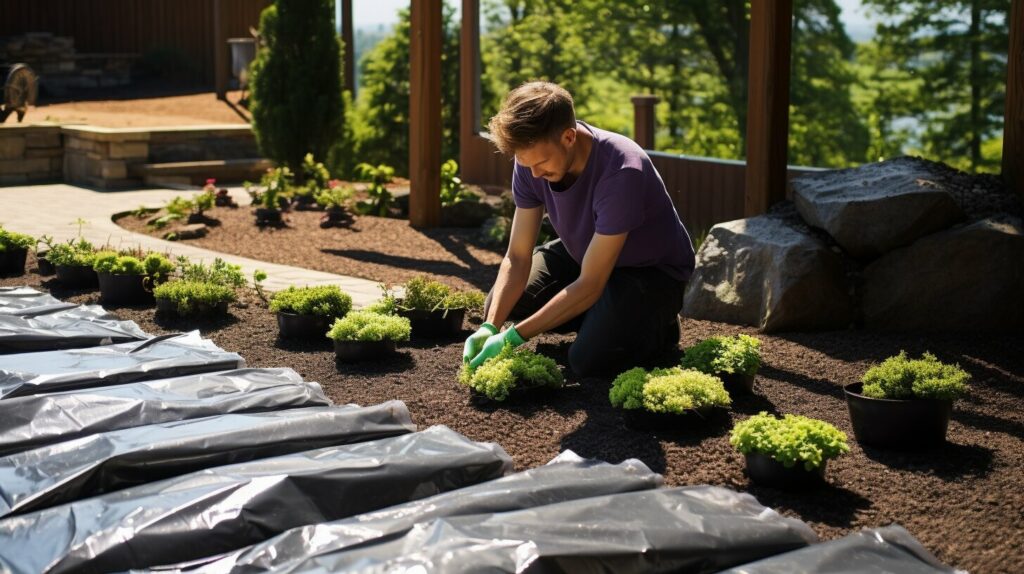
After placing the ground cover, water the area thoroughly. This will help the plants establish their roots and settle into the soil. If necessary, add a layer of mulch on top to help retain moisture.
If you’re planting ground covers in high-traffic areas, you may want to consider installing a walkway or stepping stones to protect the plants and create a designated path.
Pro tip:
Make sure to choose ground covers that are well-suited for your specific climate and soil conditions. This will help ensure successful establishment and long-lasting beauty.
Maintaining Ground Covers
Congratulations, you’ve successfully installed your new ground cover, but the work isn’t over just yet. The key to maintaining a healthy and vibrant ground cover is regular maintenance, including proper watering, weed control, and occasional trimming or mowing.
When it comes to watering your ground cover, it’s crucial to provide sufficient moisture without overwatering. Most ground covers require about an inch of water per week, but this can vary depending on your climate and soil conditions. To avoid overwatering, allow the soil to dry out slightly between watering sessions.
Weed control is also essential for maintaining a healthy ground cover. Regularly inspect your ground cover for any weeds or unwanted plants and remove them promptly. Hand-pulling weeds or using a hoe or cultivator tool can be effective for smaller areas, while larger areas may require an herbicide treatment.
Some ground covers may require occasional trimming or mowing to keep them looking tidy and promote healthy growth. However, it’s important to avoid cutting too much off at once, as this can damage the plant and prevent proper growth. Instead, aim to remove no more than one-third of the plant’s growth at any given time.

Proper maintenance is key to a healthy and vibrant ground cover. Take the time to water, weed, and trim on a regular basis to keep your ground cover looking its best.
Enhancing Curb Appeal with Ground Covers
Ground covers offer a variety of options for enhancing your home’s curb appeal. By replacing your lawn with colorful, low-maintenance ground covers, you can create a vibrant and eye-catching landscape that will wow your neighbors and visitors.
One way to use ground covers to enhance your curb appeal is to mix and match different varieties to create a dynamic and textured look. Consider using a combination of ground covers with varying heights, textures, and colors to add visual interest to your yard.
You can also use ground covers to create unique and creative designs. For example, using decorative pebbles or stepping stones as accents in your ground cover can add a touch of personality to your landscape.
When choosing ground covers for curb appeal, it’s important to select options that are well-suited for your local climate and soil conditions. Native ground covers are typically the best choice, as they are well-adapted to the local environment and require less maintenance.
“Ground covers can be used to create a dynamic and textured look.”
Another tip for enhancing your curb appeal with ground covers is to consider the shape of your yard and how the ground cover will interact with other landscape features. For example, if you have a slope or hill in your yard, consider using ground covers that will hold the soil in place and prevent erosion.
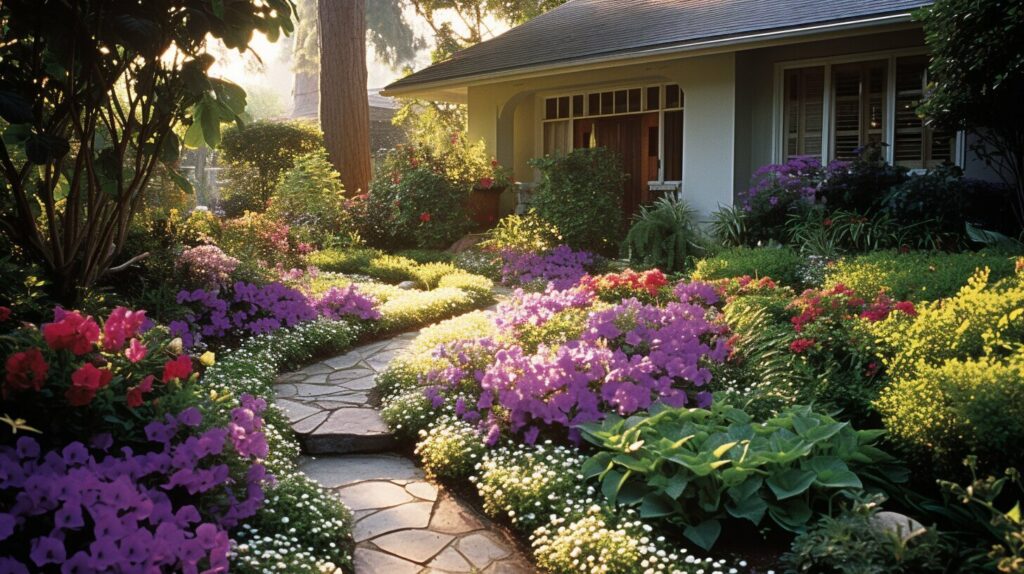
Finally, don’t be afraid to experiment with different ground cover designs to find the perfect look for your home. With so many options available, from moss and clover to artificial turf, there’s sure to be a ground cover that will suit your style and needs.
Common Concerns about Lawn Alternatives
While lawn alternatives offer several benefits, many people have concerns and misconceptions about them. Here are some of the most common concerns and the truth behind them:
- “Ground covers won’t look as good as a traditional lawn.” While it’s true that ground covers offer a different aesthetic, they can be just as beautiful as a traditional lawn. In fact, many ground covers offer vibrant colors and textures that can enhance the curb appeal of your home.
- “Ground covers are difficult to maintain.” While some ground covers may require more maintenance than others, many are low maintenance and require less care than a traditional lawn. Additionally, ground covers can help reduce the amount of water you need to use for your landscaping, saving you time and money in the long run.
- “Ground covers will attract more pests.” While it’s true that some ground covers can attract pests like mosquitoes, others are less likely to attract pests and can even repel them. Choosing the right ground cover for your yard can help minimize pest issues.
- “Ground covers aren’t as durable as grass.” While certain ground covers may not be as durable as grass, many varieties are sturdy and can withstand foot traffic and other outdoor activities. Doing your research and choosing the right ground cover for your yard’s needs can help ensure that it lasts for years to come.
- “Ground covers are expensive to install.” While some varieties of ground covers may be more expensive to install than others, they can be cost-effective in the long run by reducing maintenance costs and conserving water. Additionally, there are many budget-friendly ground cover options, such as clover or wildflowers.
By understanding the realities of lawn alternatives, you can make an informed decision about whether they are the right choice for your yard. Don’t let common misconceptions hold you back from embracing the beauty and practicality of ground covers!
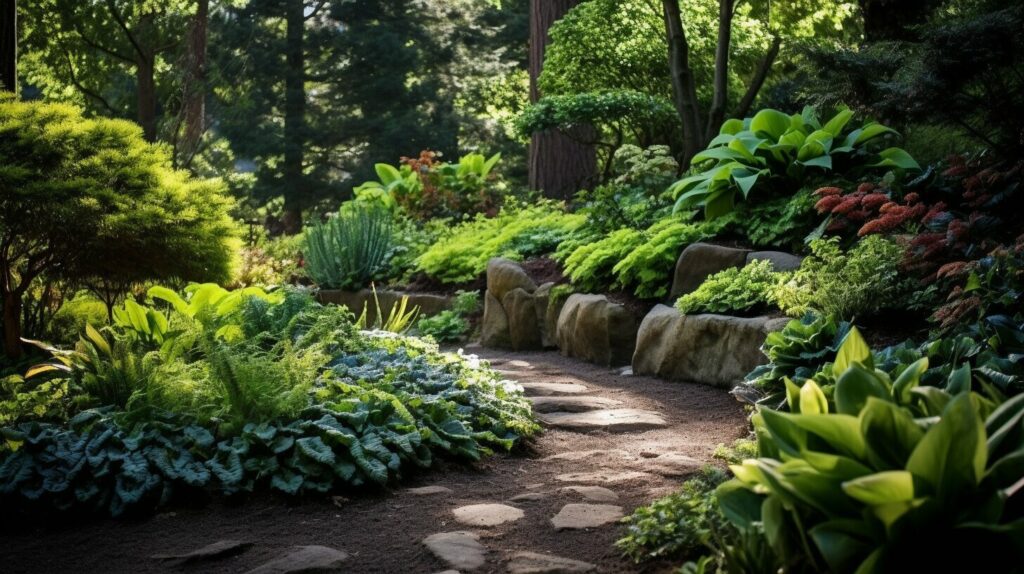
Embrace the Beauty of Lawn Alternatives
Congratulations! You’ve taken the first step in creating a vibrant, low-maintenance yard by considering lawn alternatives. By now, you have a good understanding of the benefits of ground covers and how to choose and maintain them.
Now it’s time to embrace the beauty of lawn alternatives and make your yard stand out. With the right ground cover, you can create a unique and visually appealing landscape that complements your home’s architecture and enhances its curb appeal.
Design Ideas for Ground Covers
When it comes to designing your yard with ground covers, the possibilities are endless. Here are a few ideas to get you started:
- Create a colorful mosaic pattern using different types of ground covers.
- Use natural stones or pavers to create walkways or borders that highlight different areas of your yard.
- Combine ground covers with low-maintenance ornamental grasses or plants for added texture and interest.
- Plant a variety of flowering ground covers for a seasonal burst of color.
Remember, the key to a successful ground cover design is to consider the natural conditions of your yard, such as sunlight exposure, soil type, and foot traffic. Choose ground covers that thrive in those conditions and complement each other in terms of color and texture.
Benefits of a Beautiful Yard
Having a beautiful yard is more than just an aesthetic choice – it can also have practical benefits. A well-designed yard can increase your home’s value, reduce your energy bills by providing shade and insulation, and even contribute to a healthier ecosystem by attracting pollinators and other beneficial wildlife.
So, what’s stopping you from embracing the beauty of lawn alternatives? Don’t let common concerns or myths hold you back. With the right ground cover and a little bit of planning and maintenance, you can create a yard that’s not only beautiful but also sustainable and practical.
So go ahead, choose a ground cover that speaks to you and start transforming your yard into a low-maintenance oasis that you’ll love for years to come!
FAQ
Q: What are lawn alternatives?
A: Lawn alternatives are alternative ground covers that can replace traditional lawns. They offer reduced maintenance and can enhance the curb appeal of your yard.
Q: Why should I consider lawn alternatives?
A: Choosing lawn alternatives can save you time and money on maintenance, have a positive environmental impact, and help conserve water.
Q: What types of ground covers can be used as lawn alternatives?
A: There are various ground covers that can be used as lawn alternatives, including natural options such as clover and moss, as well as artificial turf for a maintenance-free option.
Q: How do I choose the right ground cover for my yard?
A: When choosing a ground cover, consider factors such as soil type, sunlight exposure, and foot traffic to ensure it is suitable for your yard’s conditions.
Q: How do I install ground covers?
A: Installing ground covers involves proper preparation and steps to ensure successful establishment. This may include site preparation, removing existing vegetation, and proper planting techniques.
Q: What maintenance tasks are involved in caring for ground covers?
A: Maintaining ground covers may include tasks such as weed control, regular watering, and occasional trimming or mowing, depending on the type of ground cover chosen.
Q: Can ground covers enhance the curb appeal of my home?
A: Yes, ground covers can enhance the curb appeal of your home. With various design ideas and inspiration, they can contribute to creating a visually appealing landscape.
Q: What are some common concerns or myths about lawn alternatives?
A: Common concerns and myths about lawn alternatives include worries about their durability, appearance, and suitability for various climates. However, accurate information can help address these concerns.
Q: Why should I embrace the beauty of lawn alternatives?
A: By embracing the beauty of lawn alternatives, you can enjoy a vibrant yard with reduced maintenance, enhancing both the aesthetics of your home and your quality of life.

